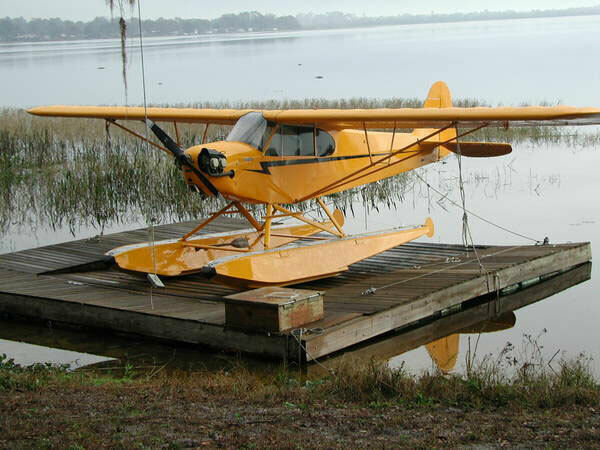-40%
"Drawings Aircraft Piper Cub: Plans CD"
$ 5.28
- Description
- Size Guide
Description
"Drawings Aircraft Piper Cub: Plans CD"And again, the legendary aircraft,
Pajper-keb, already built in various countries around
the world and to this day remains a popular light aircraft,
is accessible to novice pilots fans and idle time in the construction,
Build the plane you were dreaming.
I sell paintings and items collected by several different sources,
take advantage and build an airplane.
I am sending the CD all over the world, the cost of postal shipment of $ 5.
I forward your email online, please contact me if you have a problem.
Files will be sent to the CD drive.
AT THE BEST WEIGHT
According to the order of the allied command of the armada of Anglo-American aircraft wave-by-wave began to cross the English Channel: this is how July 6, 1944 the invasion of the allied forces in France began, marking the opening of a second front.
In an effort to resolve the matter in their favor as quickly as possible, our Western allies took to the air everything that could fly. Therefore, in battle formations carrying an amphibious assault, there was a place even for the Grashopers, Piper light-engine aircraft. Conceived as “lightning-fast” this landing operation, however, dragged on for several months. And all this time, miniature double “grasshoppers” - the word “grasshopper” is translated that way — were actively used to communicate with the troops, remove the wounded, adjust artillery fire, and conduct close tactical reconnaissance.
Piper L-4 “Grashoper” was a variant of the well-known sports and tourist aircraft Piper “Cab”, with the outbreak of World War II, became widespread in the American, and then the English and some other armies. In 1941, the Cab, just like our lightweight U-2, was no longer considered a novelty. The American company Piper, founded by Bill Piper, which, incidentally, still holds a leading place in light aircraft, began the mass production of Keb in 1935. And when in 1941 the American army had a need for a mass light-engine car, they did not choose for a long time - the “Cab” was an ideal option.
First of all, they set up the release of a scout under the designation 0-49A, then the multi-purpose L-4 followed, which was used both as a messenger and as a sanitary officer, and with dual control as a training one. Later, another scout model with the designation 0-59 was produced. A radio station was installed on scouts, spotters, and some connected aircraft in the trunk remaining from the sports and tourist prototype.
During the war years, American industry has built more than 5.5 thousand “Kebov” - “Grasshopers”. They were used for a long time in the US Army, and at the end of hostilities they were sold to private owners and to many liberated and developing countries. In England, in addition to the Grashopers, supplied by Lend-Lease, the Auster company, founded here by Taylor, started production of its similar machines.
With the end of the war, the need for combat light aircraft fell sharply. However, military adventures in the countries of Asia and Africa forced the US Air Force in 1949 to announce a competition for a new light aircraft. The tasks of the new machine, as in 1941; reconnaissance, communications, artillery fire adjustments.
In the hope of getting a five millionth contract for serial deliveries, five companies took part in the competition, including Piper and Taylorcraft, who presented new versions of the old Cab, equipped with 130-liter engines. from. However, the organizers of the competition this time preferred the all-metal “Cessna-305”. It had the best take-off and landing characteristics, and the metal casing did not require frequent replacement, as on the “Cab”. The aircraft was equipped with a powerful radio station, small bombs, unguided missiles. The weight of the combat load reached 2 thousand kg.
The machine received its further development, serving as a prototype for many very similar options. The most successful are machines with the indices “150” and “172”, the serial production of which has long exceeded 100 thousand copies. Such a “Cessna” can now be found in any corner of the planet. Note that the military version of “Cessna-172” with the designation T-41, which recently landed near Red Square, has long been the main aircraft of the initial training of the US Air Force.
After the reckless raid of “Cessna” in Moscow, interest in light-engine vehicles in the Western military increased sharply. Special light reconnaissance engines with piston engines are now being hastily designed in the USA, Germany, and France. However, in some countries, such as Sweden, light-engine reconnaissance and combat aircraft have always been considered a very serious type of military equipment. Currently there is in service with the MFi-17. This triple 200-strong aircraft can be equipped with special reconnaissance equipment, and machine guns, bombs, unguided and guided, including anti-tank missiles, as well as small air-to-air missiles for self-defense are provided on the external suspension under the wing.
The history of this machine began back in the late 50s, when the amateur designer Swede Born Anderson, who was then working in the USA, built the original two-seater VA-7. In the United States, the aircraft was not appreciated, and soon Anderson returned to Sweden and organized his own small company, which began producing the aircraft under the name MFi-9 Junior. A military training version was soon created, then a scout equipped with equipment for tactical aerial photography, and finally an ultralight attack aircraft appeared.
Following the "Junior" in the same way, which turned out to be very convenient and rational, several light multi-purpose combat aircraft were built in Sweden. The most modern model - MFi-17 “Safari” supplied




















